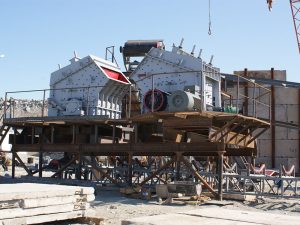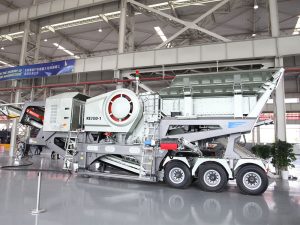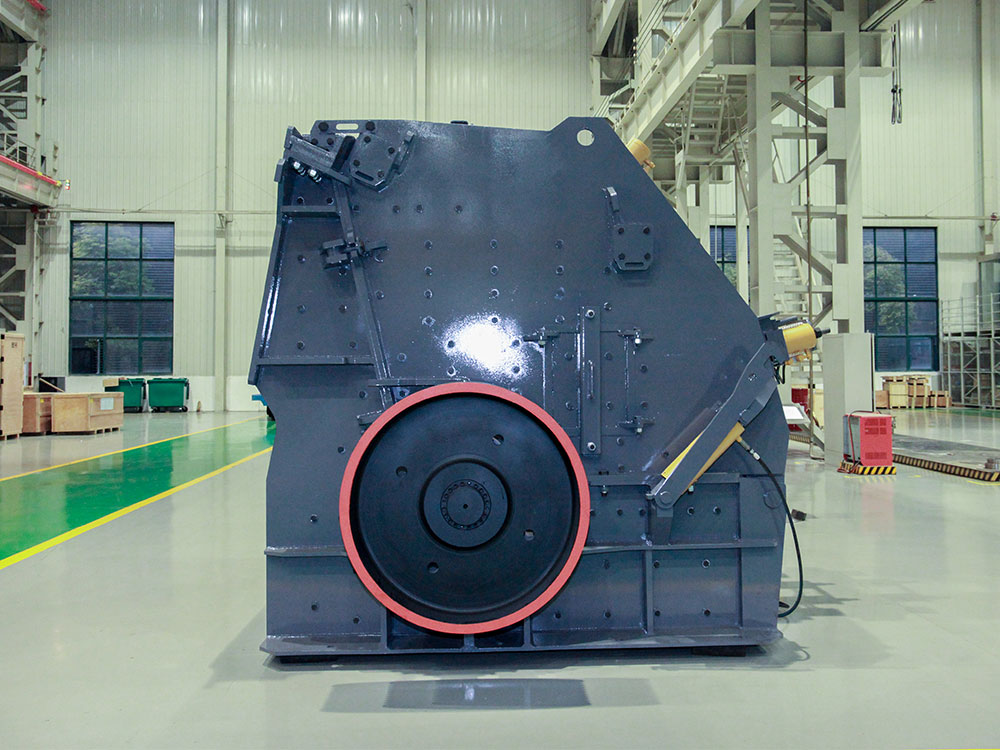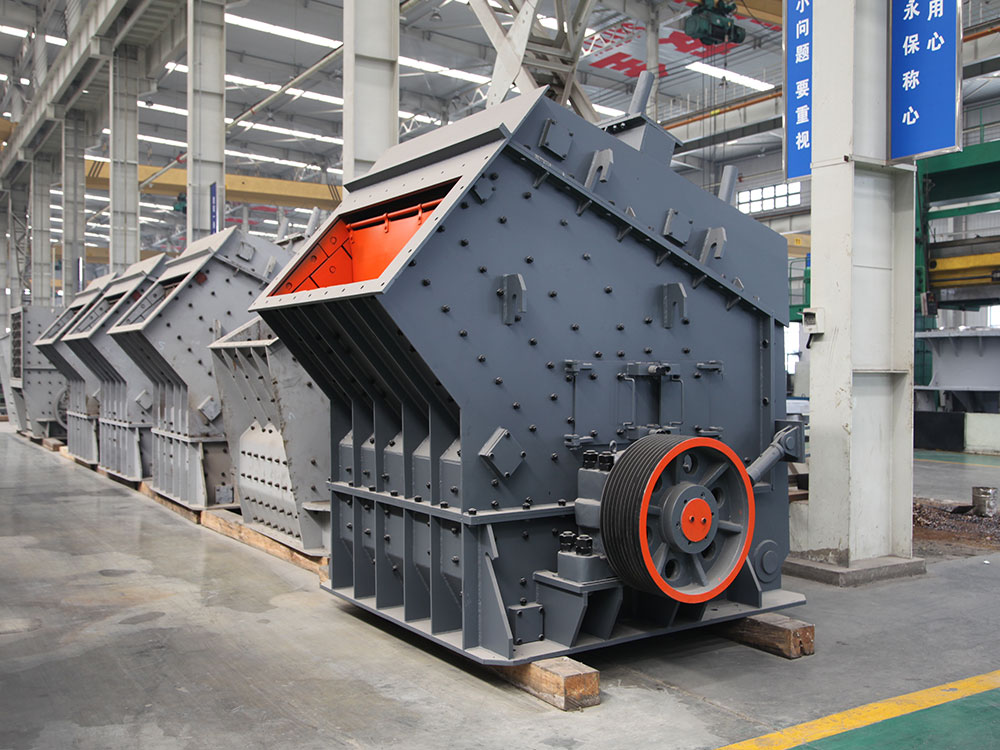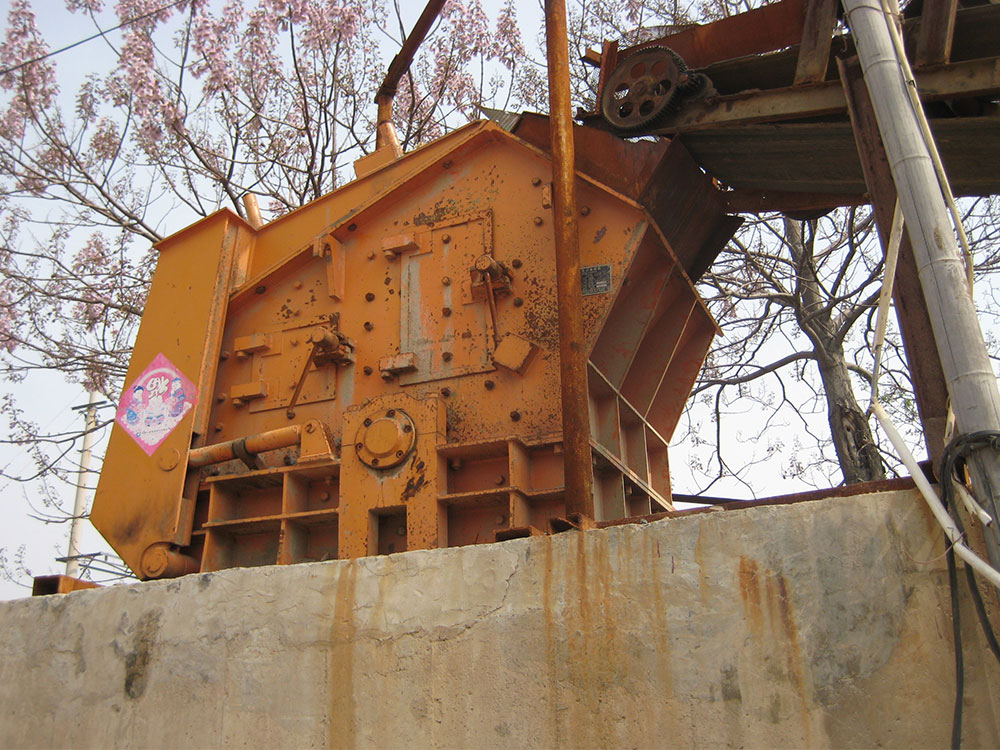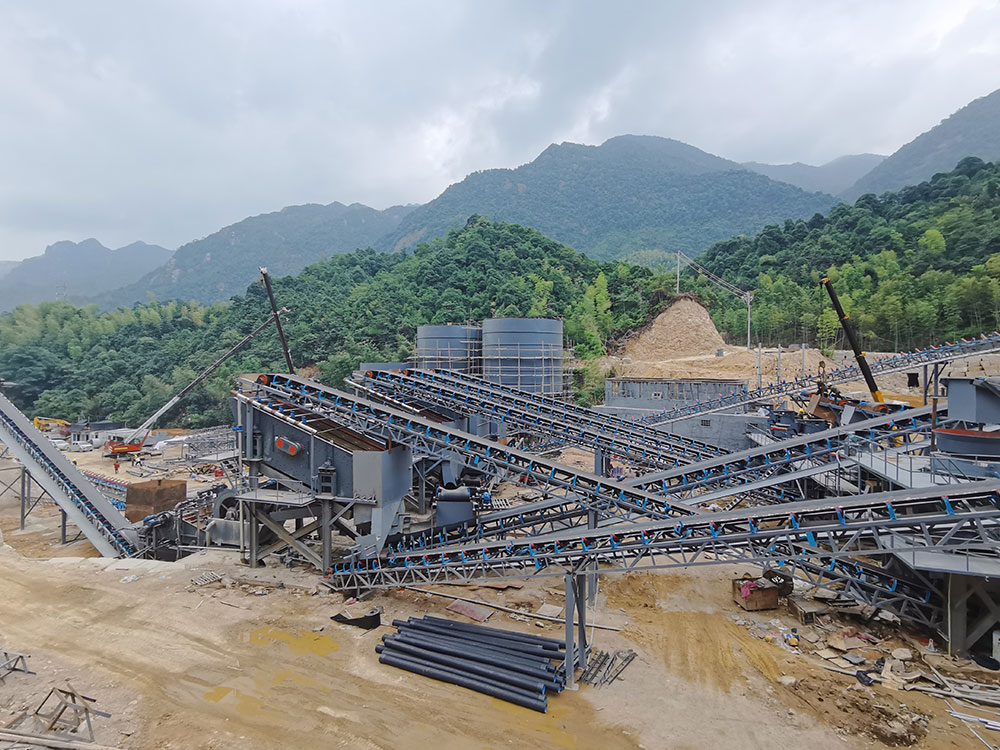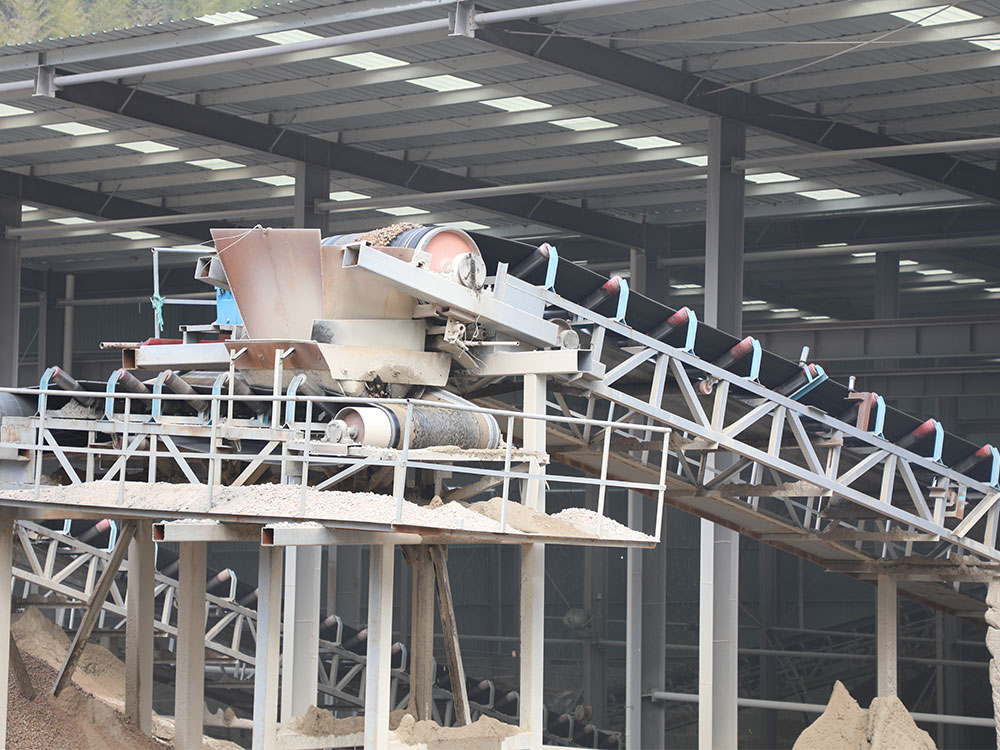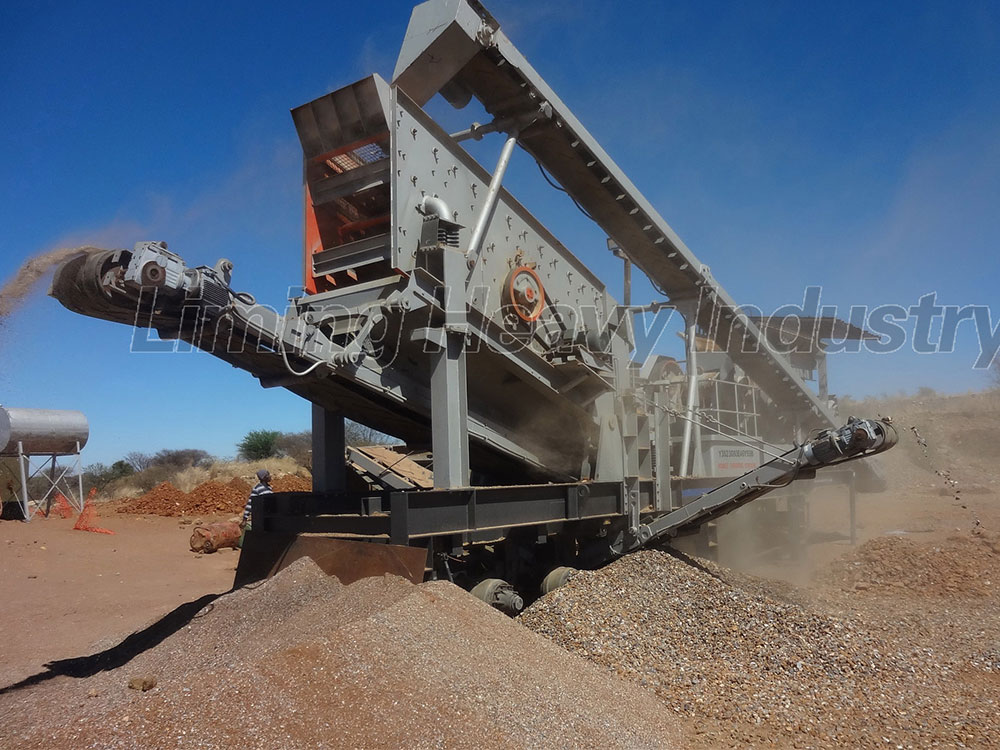In the fields of sand and gravel aggregate production, mining crushing, and resource utilization of construction waste, impact crushers (impact crushers) and hammer crushers (hammer crushers) are the two core medium and fine crushing equipment, which often make users face the difficulty of choosing. Although both belong to the principle of impact crushing, there are significant differences in structural design, working mechanism, performance and application scenarios. A deep understanding of these differences is crucial to optimizing production line configuration, improving production efficiency and reducing operating costs.
1. Core structure: the fundamental division of design concepts
Impact crusher (impact crusher):
Core components: A high-speed rotating rotor (usually an integral cast steel or welded structure, solid and heavy), on which several plate hammers (high-wear-resistant materials such as high-chromium alloy cast iron) are rigidly fixed. An impact plate (also known as a liner or impact plate) is installed on the periphery of the rotor, usually including a primary and a secondary impact plate to form a crushing chamber.
No grate screen: This is one of the most significant features of the impact crusher that distinguishes it from the traditional hammer crusher. The particle size of the discharge is mainly controlled by adjusting the gap between the rotor and the impact plate and the inclination of the impact plate.
Impact plate system: Multi-stage adjustable impact plates form the main working surface of the crushing chamber. They are usually equipped with hydraulic or mechanical adjustment devices to facilitate quick adjustment of the gap to suit different particle sizes and material requirements. The impact plates themselves are also made of wear-resistant materials.
Heavy rotor: The rotor has a large mass and a large moment of inertia, which can effectively crush hard materials and ensure the stability of the equipment operation when encountering difficult-to-crush objects.
Hammer crusher (hammer crusher):
Core component: A high-speed rotating rotor with multiple movable hammer heads (usually also made of high-wear-resistant alloy) hingedly suspended on the rotor through the hammer shaft. An arc-shaped grate screen is installed under the rotor. :
Movable hammer heads: The hammer heads are movable and suspended on the rotor through pins. When working, they are radially thrown out under the action of centrifugal force.
Grate screen: This is a key component of the hammer crusher to control the particle size of the final product. The material must be crushed to a size smaller than the grate gap before it can be discharged. The size of the grate gap determines the maximum particle size of the discharge material.
Crushing chamber design: Relatively simple, mainly composed of rotor, grate screen and casing lining plate.
2. Crushing mechanism: different paths of impact mode and particle size control
Working principle of impact crusher:
Material enters the crushing chamber. The plate hammer on the high-speed rotating rotor directly impacts the material, causing it to gain huge kinetic energy and fly to the impact plate at high speed. The material and the impact plate collide strongly and are crushed. The crushed material rebounds from the impact plate, or flies back to the direction of the rotor and is impacted by the plate hammer again, or flies to the secondary impact plate for impact crushing again. The material undergoes multiple and repeated impacts, collisions, and rebounds in the crushing chamber composed of the rotor, the primary impact plate, and the secondary impact plate until the particle size is reduced to the point where it can be discharged through the gap between the rotor and the bottom of the impact plate.
Particle size control: It is mainly achieved by adjusting the gap between the rotor and the impact plate (especially the gap between the primary impact plate and the rotor) and the angle of the impact plate. The smaller the gap, the greater the crushing ratio and the finer the product particle size; adjusting the angle of the impact plate can change the material impact trajectory and retention time. There is no forced screening, and qualified materials are discharged naturally.
Working principle of hammer crusher:
The material enters the crushing chamber. The high-speed rotating rotor drives the movable hammer to swing. The material is first crushed by the impact of the hammer. The impacted and crushed material hits the lining plate of the inner wall of the casing at high speed, and secondary crushing occurs. Smaller materials fall to the grate screen under the action of gravity. Materials smaller than the current grate gap size are discharged through the grate screen. Materials larger than the grate gap size remain on the screen surface and continue to be impacted, ground, and milled by subsequent hammers until they are crushed to pass through the grate screen.
Particle size control: It is mainly achieved by replacing grate screen plates with different gap sizes. The grate gap size determines the maximum particle size of the product. There is also a certain gap between the hammer and the grate screen.
III. Typical application scenarios: selection based on local conditions
Scenarios where impact crusher is an ideal choice:
High requirements for finished product particle shape: Such as high-grade concrete aggregate, asphalt aggregate, high-speed railway ballast, etc., cubic particles can provide better strength and stability.
Processing medium and high hardness materials: The main equipment for crushing hard rocks such as granite, basalt, river pebbles, quartz stone, iron ore, etc.
The water or mud content of the material may fluctuate: No need to worry about wet sticky blockage, to ensure continuous operation.
Need to flexibly adjust the product particle size: When the production line needs to frequently switch to produce products of different specifications, the advantage of online adjustment is obvious.
Single-stage crushing demand is large: A single machine is required to achieve a high crushing ratio and simplify the process flow.
Difficult-to-crush foreign matter may be mixed in the feed (risk controllable): Its iron protection ability provides more safety protection.
Scenarios where hammer crusher has advantages:
Processing medium and low hardness brittle materials: Limestone, marl, coal, gypsum, slag, shale, etc. are its traditional advantage areas.
Require high proportion of fine powder (stone powder) output: Such as cement raw material preparation, sand making (partial soft rock), etc.
Not high requirements for particle shape: Such as ordinary construction gravel, cushion material, etc.
The initial investment budget is relatively limited: Under the same specifications, the purchase cost of hammer crusher is usually lower than that of impact crusher (but the life of wear parts and operating costs need to be considered comprehensively).
The material is very dry and pure (no iron and no stickiness): It can avoid its biggest shortcoming - clogging problem.
IV. Key factors for selection decision
Choosing impact crusher or hammer crusher is not a simple either-or, and the following factors need to be systematically evaluated:
Material properties:
Hardness (Mohs hardness/Praeter hardness): This is the primary factor. For high hardness, choose impact crusher, and medium and low hardness hammer crusher may be more economical.
Abrasiveness: Abrasive materials will significantly shorten the life of hammer head and grate of hammer crusher, and the plate hammer and impact plate of impact crusher have relatively better wear resistance.
Moisture content & mud content: Wet and sticky materials are the "natural enemy" of hammer crusher, and impact crusher is the first choice.
Feed particle size & required discharge particle size: Evaluate the required crushing ratio, and the crushing ratio of impact crusher is larger.
Material composition (whether it contains iron or other difficult-to-crush materials): For sites with poor iron removal effects, the iron protection of the impact crusher is safer.
Product requirements:
Particle shape: For high requirements, choose the impact crusher.
Particle size distribution & fine powder content: For more fine powder, choose the hammer crusher; for specific grading or low fine powder, choose the impact crusher.
Capacity requirements: Both have large capacity models, which need to be specifically matched in combination with material and product requirements.
Production conditions and costs:
Production line configuration: Is it a single-stage crushing or a link in a multi-stage crushing? The impact crusher is more suitable for single-stage or secondary crushing (medium crushing), and the hammer crusher is often used for secondary crushing (medium crushing) or tertiary crushing (fine crushing).
Investment cost: Consider the initial purchase price of the equipment.
Operating cost: The most important thing! Calculate the consumption cost of wear parts per ton of product (plate hammer/hammer head, impact plate/grate screen), energy consumption cost, maintenance labor cost and downtime loss. Impact crushers often have long-term cost advantages in terms of wear-resistant parts life and reduced clogging and downtime, especially when handling hard materials.
Maintenance convenience: Evaluate the frequency and time required to replace wearing parts. It is usually more convenient and quicker to replace the plate hammer of the impact crusher.
Site space and environmental protection requirements (noise, dust): Both are noisy, and noise reduction measures need to be considered; hammer crushers may have more dust.
V. Technological development and integration trends
With the development of technology, the boundaries between the two are not absolute:
Grateless hammer crusher: Some new hammer crushers have cancelled the bottom grate screen, and the particle size is controlled by adjusting the impact liner (similar to the principle of impact crusher), which improves the adaptability to wet and sticky materials, and the particle shape is also improved, blurring the traditional boundaries. However, its hammer head is still a movable suspension type, and its iron protection ability and ability to handle hard materials are still weaker than that of the impact crusher.
Heavy-duty and optimized design: The impact crusher continues to make progress in improving the durability of the rotor, optimizing the impact plate curve, and enhancing the convenience of adjustment; the hammer crusher is working hard to improve the hammer head material, structure (such as combined hammer head) and grate design.
Intelligent control: Both are integrating sensors and automatic control systems to achieve automatic gap adjustment, overload protection, wear monitoring and predictive maintenance.
The impact crusher and the hammer crusher are like the "strong and heavy sword" and "smart and sharp knife" in the crushing field, each with its own unique features. The impact crusher dominates the field of high-quality aggregate production and hard rock crushing with its rigid impact, excellent particle shape, strong adaptability to hard and wet materials, flexible particle size adjustment and reliable iron protection. The hammer crusher maintains an important position in specific fields with its high efficiency in crushing brittle soft rocks, the ability to produce fine powder and relatively low initial cost.
A wise choice comes from a deep understanding of material characteristics, product requirements, cost structure (especially long-term operating costs) and specific working conditions. In large-scale modern sand and gravel aggregate production lines, hard rock crushing, and application scenarios with strict requirements on particle shape, the comprehensive advantages of impact crushers are becoming increasingly prominent, making them a more popular, efficient, and reliable choice. In the case of processing medium-soft materials such as limestone, where there is a demand for fine powder, limited budgets, and ideal working conditions, hammer crushers are still a practical solution. Only by understanding their core differences can we accurately match needs and maximize production benefits.


